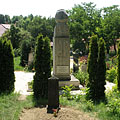
 Turistické a cestovné informácie
Turistické a cestovné informácie
(Optimalizované pre zariadenia s malou obrazovkou)
Visegrád Castle (Upper Castle) - Visegrád, Maďarsko
Po kliknutí:
Kliknutím na obrázky!
-
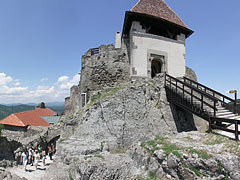
Gate tower of the inner castle
Dátum fotenie: 10.6.20092009
Vytvoril: Robert Németh
Model fotoaparátu: Konica Minolta Dimage A200
Visegrád, Maďarsko
-

Looking back from the stairs, the view is impressive
Dátum fotenie: 10.6.20092009
Vytvoril: Robert Németh
Model fotoaparátu: Konica Minolta Dimage A200
Visegrád, Maďarsko
-
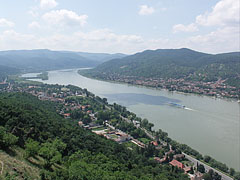
The vision of the Danube Bend opens up from the Castle Hill
Dátum fotenie: 10.6.20092009
Vytvoril: Robert Németh
Model fotoaparátu: Konica Minolta Dimage A200
Visegrád, Maďarsko
-

Wall remains of the inner castle
Dátum fotenie: 10.6.20092009
Vytvoril: Robert Németh
Model fotoaparátu: Konica Minolta Dimage A200
Visegrád, Maďarsko
-
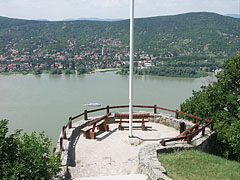
Dátum fotenie: 10.6.20092009
Vytvoril: Robert Németh
Model fotoaparátu: Konica Minolta Dimage A200
Visegrád, Maďarsko
-

Entrance of the Upper Castle, the gateway tower
In around 1400 Sigismund of Luxemburg King of Hungary had a third defensive wall built around the Upper Castle of Visegrád, and also ordered to build this gate tower on it.
Dátum fotenie: 10.6.20092009
Vytvoril: Robert Németh
Model fotoaparátu: Konica Minolta Dimage A200
Visegrád, Maďarsko
-

Entrance of the Upper Castle, the gate tower
Dátum fotenie: 10.6.20092009
Vytvoril: Robert Németh
Model fotoaparátu: Konica Minolta Dimage A200
Visegrád, Maďarsko
-

Gateway tower from the times of king Sigismund of Luxemburg, viewed from the castle
Dátum fotenie: 10.6.20092009
Vytvoril: Robert Németh
Model fotoaparátu: Konica Minolta Dimage A200
Visegrád, Maďarsko
-
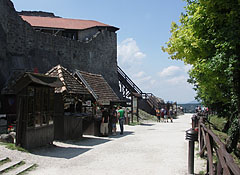
Souvenir shops with medieval presentation along the castle wall
Dátum fotenie: 10.6.20092009
Vytvoril: Robert Németh
Model fotoaparátu: Konica Minolta Dimage A200
Visegrád, Maďarsko
-
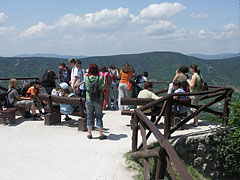
Lookout point in the castle
Dátum fotenie: 10.6.20092009
Vytvoril: Robert Németh
Model fotoaparátu: Konica Minolta Dimage A200
Visegrád, Maďarsko
-
Pleasure boat on the Danube, and houses of Nagymaros town on the other side
Dátum fotenie: 10.6.20092009
Vytvoril: Robert Németh
Model fotoaparátu: Konica Minolta Dimage A200
Visegrád, Maďarsko
Pleasure boat on the Danube, and houses of Nagymaros town on the other side - Visegrád, Maďarsko -
View of Visegrád town and the Roman Catholic Church from the Upper Castle
On the upper side of the photo the small islands and peninsulas are remains of the formerly planned Gabčíkovo-Nagymaros Waterworks hydroelectric power plant construction.
Dátum fotenie: 10.6.20092009
Vytvoril: Robert Németh
Model fotoaparátu: Konica Minolta Dimage A200
Visegrád, Maďarsko
View of Visegrád town and the Roman Catholic Church from the Upper Castle - Visegrád, Maďarsko -
The hexagonal Solomon Tower viewed from above, the Upper Castle
Dátum fotenie: 10.6.20092009
Vytvoril: Robert Németh
Model fotoaparátu: Konica Minolta Dimage A200
Visegrád, Maďarsko
The hexagonal Solomon Tower viewed from above, the Upper Castle - Visegrád, Maďarsko -
Look-out terrace and the national flag of Hungary on the Castle Hill, River Danube and Nagymaros town in the distance
Dátum fotenie: 10.6.20092009
Vytvoril: Robert Németh
Model fotoaparátu: Konica Minolta Dimage A200
Visegrád, Maďarsko
Look-out terrace and the national flag of Hungary on the Castle Hill, River Danube and Nagymaros town in the distance - Visegrád, Maďarsko -
Looking-round tourists
Dátum fotenie: 10.6.20092009
Vytvoril: Robert Németh
Model fotoaparátu: Konica Minolta Dimage A200
Visegrád, Maďarsko
Looking-round tourists - Visegrád, Maďarsko -
Stairs from the lookout terrace back to the upper castle
Dátum fotenie: 10.6.20092009
Vytvoril: Robert Németh
Model fotoaparátu: Konica Minolta Dimage A200
Visegrád, Maďarsko
Stairs from the lookout terrace back to the upper castle - Visegrád, Maďarsko -
Danube Bend (Dunakanyar in Hungarian) is such a subject that never lose the photographer's interest
Dátum fotenie: 10.6.20092009
Vytvoril: Robert Németh
Model fotoaparátu: Konica Minolta Dimage A200
Visegrád, Maďarsko
Danube Bend (Dunakanyar in Hungarian) is such a subject that never lose the photographer's interest - Visegrád, Maďarsko -
View to River Danube that divides the landscape
Dátum fotenie: 10.6.20092009
Vytvoril: Robert Németh
Model fotoaparátu: Konica Minolta Dimage A200
Visegrád, Maďarsko
View to River Danube that divides the landscape - Visegrád, Maďarsko -
The rocks which are the base of the Upper Castle
Dátum fotenie: 10.6.20092009
Vytvoril: Robert Németh
Model fotoaparátu: Konica Minolta Dimage A200
Visegrád, Maďarsko
The rocks which are the base of the Upper Castle - Visegrád, Maďarsko -
Way up to the inner parts of the castle
Dátum fotenie: 10.6.20092009
Vytvoril: Robert Németh
Model fotoaparátu: Konica Minolta Dimage A200
Visegrád, Maďarsko
Way up to the inner parts of the castle - Visegrád, Maďarsko -
Wooden stairs go up to the castle
Dátum fotenie: 10.6.20092009
Vytvoril: Robert Németh
Model fotoaparátu: Konica Minolta Dimage A200
Visegrád, Maďarsko
Wooden stairs go up to the castle - Visegrád, Maďarsko -
The castle was the preserving place of the Hungarian crown jewels for a long time
Dátum fotenie: 10.6.20092009
Vytvoril: Robert Németh
Model fotoaparátu: Konica Minolta Dimage A200
Visegrád, Maďarsko
The castle was the preserving place of the Hungarian crown jewels for a long time - Visegrád, Maďarsko -
Outlook to the corner of Szentendre Island (to Kisoroszi village) and Verőce village on the far bank of River Danube
Dátum fotenie: 10.6.20092009
Vytvoril: Robert Németh
Model fotoaparátu: Konica Minolta Dimage A200
Visegrád, Maďarsko
Outlook to the corner of Szentendre Island (to Kisoroszi village) and Verőce village on the far bank of River Danube - Visegrád, Maďarsko -
The flowers bring colors onto the gray castle walls
Dátum fotenie: 10.6.20092009
Vytvoril: Robert Németh
Model fotoaparátu: Konica Minolta Dimage A200
Visegrád, Maďarsko
The flowers bring colors onto the gray castle walls - Visegrád, Maďarsko -
Gateway tower of the inner castle
Dátum fotenie: 10.6.20092009
Vytvoril: Robert Németh
Model fotoaparátu: Konica Minolta Dimage A200
Visegrád, Maďarsko
Gateway tower of the inner castle - Visegrád, Maďarsko -
Lookout terrace in the inner castle
Dátum fotenie: 10.6.20092009
Vytvoril: Robert Németh
Model fotoaparátu: Konica Minolta Dimage A200
Visegrád, Maďarsko
Lookout terrace in the inner castle - Visegrád, Maďarsko -
The dead tree trunk got new life
Dátum fotenie: 10.6.20092009
Vytvoril: Robert Németh
Model fotoaparátu: Konica Minolta Dimage A200
Visegrád, Maďarsko
The dead tree trunk got new life - Visegrád, Maďarsko -
Gateway tower, entrance of the weapon exhibition
Dátum fotenie: 10.6.20092009
Vytvoril: Robert Németh
Model fotoaparátu: Konica Minolta Dimage A200
Visegrád, Maďarsko
Gateway tower, entrance of the weapon exhibition - Visegrád, Maďarsko -
Wooden bridge in the inner castle
Dátum fotenie: 10.6.20092009
Vytvoril: Robert Németh
Model fotoaparátu: Konica Minolta Dimage A200
Visegrád, Maďarsko
Wooden bridge in the inner castle - Visegrád, Maďarsko -
The vision of River Danube and Verőce village
Dátum fotenie: 10.6.20092009
Vytvoril: Robert Németh
Model fotoaparátu: Konica Minolta Dimage A200
Visegrád, Maďarsko
The vision of River Danube and Verőce village - Visegrád, Maďarsko -
The Nagy-Villám Hill viewed from the Upper Castle, and on the top of the hill it is Zsitvay lookout tower
Dátum fotenie: 10.6.20092009
Vytvoril: Robert Németh
Model fotoaparátu: Konica Minolta Dimage A200
Visegrád, Maďarsko
The Nagy-Villám Hill viewed from the Upper Castle, and on the top of the hill it is Zsitvay lookout tower - Visegrád, Maďarsko -
River Danube with the northern corner of Szentendre Island, viewed from the Upper Castle of Visegrád
Dátum fotenie: 10.6.20092009
Vytvoril: Robert Németh
Model fotoaparátu: Konica Minolta Dimage A200
Visegrád, Maďarsko
River Danube with the northern corner of Szentendre Island, viewed from the Upper Castle of Visegrád - Visegrád, Maďarsko -
The outer wall ring that was built by king Sigismund of Luxemburg, with Nagy-Villám Hill on the right
Dátum fotenie: 10.6.20092009
Vytvoril: Robert Németh
Model fotoaparátu: Konica Minolta Dimage A200
Visegrád, Maďarsko
The outer wall ring that was built by king Sigismund of Luxemburg, with Nagy-Villám Hill on the right - Visegrád, Maďarsko -
Rambling walls
Dátum fotenie: 10.6.20092009
Vytvoril: Robert Németh
Model fotoaparátu: Konica Minolta Dimage A200
Visegrád, Maďarsko
Rambling walls - Visegrád, Maďarsko -
Footbridge high above
Dátum fotenie: 10.6.20092009
Vytvoril: Robert Németh
Model fotoaparátu: Konica Minolta Dimage A200
Visegrád, Maďarsko
Footbridge high above - Visegrád, Maďarsko -
Dátum fotenie: 10.6.20092009
Vytvoril: Robert Németh
Model fotoaparátu: Konica Minolta Dimage A200
Visegrád, Maďarsko
- Visegrád, Maďarsko -
Dátum fotenie: 10.6.20092009
Vytvoril: Robert Németh
Model fotoaparátu: Konica Minolta Dimage A200
Visegrád, Maďarsko
- Visegrád, Maďarsko -
Dátum fotenie: 10.6.20092009
Vytvoril: Robert Németh
Model fotoaparátu: Konica Minolta Dimage A200
Visegrád, Maďarsko
- Visegrád, Maďarsko -
Dátum fotenie: 10.6.20092009
Vytvoril: Robert Németh
Model fotoaparátu: Konica Minolta Dimage A200
Visegrád, Maďarsko
- Visegrád, Maďarsko -
Dátum fotenie: 10.6.20092009
Vytvoril: Robert Németh
Model fotoaparátu: Konica Minolta Dimage A200
Visegrád, Maďarsko
- Visegrád, Maďarsko -
Dátum fotenie: 10.6.20092009
Vytvoril: Robert Németh
Model fotoaparátu: Konica Minolta Dimage A200
Visegrád, Maďarsko
- Visegrád, Maďarsko -
Dátum fotenie: 10.6.20092009
Vytvoril: Robert Németh
Model fotoaparátu: Konica Minolta Dimage A200
Visegrád, Maďarsko
- Visegrád, Maďarsko -
Dátum fotenie: 10.6.20092009
Vytvoril: Robert Németh
Model fotoaparátu: Konica Minolta Dimage A200
Visegrád, Maďarsko
- Visegrád, Maďarsko -
Dátum fotenie: 10.6.20092009
Vytvoril: Robert Németh
Model fotoaparátu: Konica Minolta Dimage A200
Visegrád, Maďarsko
- Visegrád, Maďarsko -
Dátum fotenie: 10.6.20092009
Vytvoril: Robert Németh
Model fotoaparátu: Konica Minolta Dimage A200
Visegrád, Maďarsko
- Visegrád, Maďarsko -
Dátum fotenie: 10.6.20092009
Vytvoril: Robert Németh
Model fotoaparátu: Konica Minolta Dimage A200
Visegrád, Maďarsko
- Visegrád, Maďarsko -
Dátum fotenie: 10.6.20092009
Vytvoril: Robert Németh
Model fotoaparátu: Konica Minolta Dimage A200
Visegrád, Maďarsko
- Visegrád, Maďarsko -
Dátum fotenie: 10.6.20092009
Vytvoril: Robert Németh
Model fotoaparátu: Konica Minolta Dimage A200
Visegrád, Maďarsko
- Visegrád, Maďarsko -
Dátum fotenie: 10.6.20092009
Vytvoril: Robert Németh
Model fotoaparátu: Konica Minolta Dimage A200
Visegrád, Maďarsko
- Visegrád, Maďarsko -
Dátum fotenie: 10.6.20092009
Vytvoril: Robert Németh
Model fotoaparátu: Konica Minolta Dimage A200
Visegrád, Maďarsko
- Visegrád, Maďarsko -
Dátum fotenie: 10.6.20092009
Vytvoril: Robert Németh
Model fotoaparátu: Konica Minolta Dimage A200
Visegrád, Maďarsko
- Visegrád, Maďarsko -
Dátum fotenie: 10.6.20092009
Vytvoril: Robert Németh
Model fotoaparátu: Konica Minolta Dimage A200
Visegrád, Maďarsko
- Visegrád, Maďarsko -
Dátum fotenie: 10.6.20092009
Vytvoril: Robert Németh
Model fotoaparátu: Konica Minolta Dimage A200
Visegrád, Maďarsko
- Visegrád, Maďarsko -
Dátum fotenie: 10.6.20092009
Vytvoril: Robert Németh
Model fotoaparátu: Konica Minolta Dimage A200
Visegrád, Maďarsko
- Visegrád, Maďarsko -
Dátum fotenie: 10.6.20092009
Vytvoril: Robert Németh
Model fotoaparátu: Konica Minolta Dimage A200
Visegrád, Maďarsko
- Visegrád, Maďarsko -
Dátum fotenie: 10.6.20092009
Vytvoril: Robert Németh
Model fotoaparátu: Konica Minolta Dimage A200
Visegrád, Maďarsko
- Visegrád, Maďarsko -
Dátum fotenie: 10.6.20092009
Vytvoril: Robert Németh
Model fotoaparátu: Konica Minolta Dimage A200
Visegrád, Maďarsko
- Visegrád, Maďarsko -
Dátum fotenie: 10.6.20092009
Vytvoril: Robert Németh
Model fotoaparátu: Konica Minolta Dimage A200
Visegrád, Maďarsko
- Visegrád, Maďarsko -
Dátum fotenie: 10.6.20092009
Vytvoril: Robert Németh
Model fotoaparátu: Konica Minolta Dimage A200
Visegrád, Maďarsko
- Visegrád, Maďarsko -
Dátum fotenie: 10.6.20092009
Vytvoril: Robert Németh
Model fotoaparátu: Konica Minolta Dimage A200
Visegrád, Maďarsko
- Visegrád, Maďarsko -
Dátum fotenie: 10.6.20092009
Vytvoril: Robert Németh
Model fotoaparátu: Konica Minolta Dimage A200
Visegrád, Maďarsko
- Visegrád, Maďarsko -
Dátum fotenie: 10.6.20092009
Vytvoril: Robert Németh
Model fotoaparátu: Konica Minolta Dimage A200
Visegrád, Maďarsko
- Visegrád, Maďarsko -
Dátum fotenie: 10.6.20092009
Vytvoril: Robert Németh
Model fotoaparátu: Konica Minolta Dimage A200
Visegrád, Maďarsko
- Visegrád, Maďarsko -
Dátum fotenie: 10.6.20092009
Vytvoril: Robert Németh
Model fotoaparátu: Konica Minolta Dimage A200
Visegrád, Maďarsko
- Visegrád, Maďarsko -
Dátum fotenie: 10.6.20092009
Vytvoril: Robert Németh
Model fotoaparátu: Konica Minolta Dimage A200
Visegrád, Maďarsko
- Visegrád, Maďarsko -
Dátum fotenie: 10.6.20092009
Vytvoril: Robert Németh
Model fotoaparátu: Konica Minolta Dimage A200
Visegrád, Maďarsko
- Visegrád, Maďarsko -
Dátum fotenie: 10.6.20092009
Vytvoril: Robert Németh
Model fotoaparátu: Konica Minolta Dimage A200
Visegrád, Maďarsko
- Visegrád, Maďarsko -
Dátum fotenie: 10.6.20092009
Vytvoril: Robert Németh
Model fotoaparátu: Konica Minolta Dimage A200
Visegrád, Maďarsko
- Visegrád, Maďarsko -
Dátum fotenie: 10.6.20092009
Vytvoril: Robert Németh
Model fotoaparátu: Konica Minolta Dimage A200
Visegrád, Maďarsko
- Visegrád, Maďarsko -
Dátum fotenie: 10.6.20092009
Vytvoril: Robert Németh
Model fotoaparátu: Konica Minolta Dimage A200
Visegrád, Maďarsko
- Visegrád, Maďarsko -
Dátum fotenie: 10.6.20092009
Vytvoril: Robert Németh
Model fotoaparátu: Konica Minolta Dimage A200
Visegrád, Maďarsko
- Visegrád, Maďarsko -
Dátum fotenie: 10.6.20092009
Vytvoril: Robert Németh
Model fotoaparátu: Konica Minolta Dimage A200
Visegrád, Maďarsko
- Visegrád, Maďarsko -
Dátum fotenie: 10.6.20092009
Vytvoril: Robert Németh
Model fotoaparátu: Konica Minolta Dimage A200
Visegrád, Maďarsko
- Visegrád, Maďarsko
Kliknutím na obrázky!
Charakteristiky, vlastnosti, rysy
Poloha:
GPS súradnice: Šířka 47°47'37", Dĺžka 18°58'49" (N47 47.62 - E18 58.82)
Informácie, krátke poviedky, zaujímavé fakty
 The vision of the Danube Bend opens up from the Castle Hill
The vision of the Danube Bend opens up from the Castle Hill
On the Visegrád section of the Danube Bend the traces of the construction of the formerly planned Gabčíkovo-Nagymaros Waterworks (or Bős-Nagymaros hydroelectric power plant) still can be seen. The idea comes from the 1930s, then in 1963 it formed to a concrete investment plan between Hungary and Czechoslovakia. The aim was to improve the navigability of River Danube and to produce energy by building a hydroelectric power plant building complex, among other locations here in the Danube Bend (Hungarian: "Dunakanyar") region. But the planned waterworks wasn't built up, because it was feared that it will cause and ecological disaster on the upper sections of the Danube River, especially in the wet meadows of the Szigetköz island plain in Hungary. Due to this in 1990 at the first National Assembly after the political system change in Hungary the Hungarian parties rejected the construction of the facility.
But despite it the Czechoslovak leaders have unilaterally decided to build the C version of the waterworks anyway. In 1992 they turned on the power plant (the Gabčíkovo Dam) and on a 40-kilometer-long section they arbitrarily diverted the water of River Danube to the Czechoslovakian side of the border. In response the government of Hungary took the dispute to the International Court of Justice in The Hague. After five years the International Court decided that both parties were blamed equally: Hungary wrongfully terminated the interstate contract that was conclude in 1977, as well as Slovakia (that was already separated from the Czech Republic) unlawfully launched the Gabčíkovo power plant. Anyway, some of the the disputes related to the project still have not been fully concluded. Slovakia diverts the water of River Danube still without a legal basis, as well as the project still has adverse environmental effects even today.
 The hexagonal Solomon Tower viewed from above, the Upper Castle
The hexagonal Solomon Tower viewed from above, the Upper Castle
The six-story Solomon Tower (in Hungarian "Salamon-torony") was a keep (fortified residental tower) in the Lower Castle of Visegrád. Its name is based on a misunderstanding, because King Solomon of Hungary from the Árpád dynasty who the tower is named after lived in the 11th century, so of course he couldn't be a prisoner in this 13th-century tower as the legend says. Solomon was a rebel and he wanted to regain his earlier throne from King (St.) Ladislaus I of Hungary, who finally had him caught in 1083. He was detained really in Visegrád, although not here but in the former Count's Castle (or Ispán's Castle) on the Sibrik Hill. Moreover, King Ladislaus I soon released Solomon from the captivity, in August of the same year on the occasion of the feast of canonization of King Stephen I of Hungary.
The specialities of the Solomon Tower are among others: the hexagonal shape which is unique in Europe, the 8-meter-thick walls, as well as the many survived romanesque style arched windows. The renovations were begun in the 1870s by the plans of Frigyes Schulek, who was also the architect of the Fisherman's Bastion ("Halászbástya"), as well as he designed the reconstruction of the Matthias Church ("Mátyás-templom"), both are situated in Budapest. Today there is a local history exhibition within the walls of the renovated 31-meter-tall building.
 Looking back from the stairs, the view is impressive
Looking back from the stairs, the view is impressive
In 1335 the Visegrád Castle was the location of a famous summit meeting of kings, the event is called (the first) "Kings' Congress of Visegrád". Beside the host King Charles Robert (Charles I of Hungary) the appointment was attended by among others King John I of Bohemia (John the Blind), King Casimir III of Poland, Wenceslaus Margrave of Moravia (the later Charles IV, Holy Roman Emperor), Henry XIV Duke of Bavaria from the House of Wittelsbach, and Rudolf I Duke of Saxony (Duke of Saxe-Wittenberg). The meeting resulted in an agreement which ensured economic independence for the related countries from Vienna and the Habsburgs.
Following the example of the former congress in 1991 there was a cooperation summit meeting of the so-called "Visegrád Group" or "V4 Group" countries (Hungary, Poland and Czechoslovakia, the latter was separated into the sovereign Czech Republic and Slovakia in 1993) in the Royal Palace of Visegrád. In 2006 on the occasion of the 15th anniversary of this event the prime ministers of the V4 countries together celebrated the success of the convention in Visegrád.
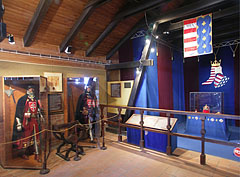 The castle was the preserving place of the Hungarian crown jewels for a long time
The castle was the preserving place of the Hungarian crown jewels for a long time
In 1370 a Polish delegation arrived into the town and they offered the Crown of Poland to King Louis the Great (Louis I of Hungary). After a coronation ceremony the Polish crown was kept together with the Holy Crown of Hungary in the treasure chamber of the Upper Castle of Visegrád. With some minor interruptions Visegrád was the depository of the crown jewels including the Holy Crown, from 1301, the beginning of the era of King Charles Robert (Charles I of Hungary) until 1529.
 The Nagy-Villám Hill viewed from the Upper Castle, and on the top of the hill it is Zsitvay lookout tower
The Nagy-Villám Hill viewed from the Upper Castle, and on the top of the hill it is Zsitvay lookout tower
The 377-meter-high Nagy-Villám Hill (literally "Great Lightning Hill") is situated near the Várhegy or Castle Hill in Visegrád. On the top of the hill it is the Zsitvay Lookout Tower, which was built in 1933 for the 20th anniversary of the foundation of the Hungarian Tourist Association ("Magyar Turista Szövetség"), ordered and financially supported by Tibor Zsitvay, who was the Minister of Justice at that time and also the chairman of the tourist association. The stone building was designed by dr. Hubert Kessler architect, initially it was named Jubilee Lookout ("Jubileumi-kilátó") but quite soon (already in 1935) everybody started to call it Zsitvay Lookout ("Zsitvay-kilátó").
Beside the lookout tower among other things the Nagyvillám Restaurant, an adventure playground and a canopy cableway can be found on the Nagy-Villám Hill.
Visegrád - Ďalšie fotogalérie:
Tiež by vás mohlo zaujímať (Súvisiace stránky):
Destinácie v cestovnom sprievodcu:
Visegrád (220 fotky + 1 panoramatické zábery)
Danube Bend (Dunakanyar) (1 769 fotky + 6 panoramatické zábery)
Pest megye (county) (15 122 fotky + 50 panoramatické zábery)
Budapešť a jeho okolie (15 989 fotky + 52 panoramatické zábery)
Maďarsko (27 287 fotky + 163 panoramatické zábery)
a okrem toho:
(v rámci tu: Pest megye a Danube Bend)
Pilis Mountains (Pilis hegység) (335 fotky)
Buda Hills (Budai-hegység) (8 632 fotky + 21 panoramatické zábery)
Gödöllő Hills (Gödöllői-dombság) (4 203 fotky + 21 panoramatické zábery)
Visegrád Mountains (Visegrádi-hegység) (116 fotky + 1 panoramatické zábery)
Cegléd (125 fotky + 2 panoramatické zábery)
Ráckeve (92 fotky)
Dunakeszi (259 fotky)
Göd (23 fotky)
Nagykőrös (250 fotky + 2 panoramatické zábery)
Nagymaros (31 fotky)
Pilisvörösvár (88 fotky)
Szentendre (597 fotky + 1 panoramatické zábery)
Vác (232 fotky + 2 panoramatické zábery)
Esztergom (110 fotky + 1 panoramatické zábery)
Dunakeszi (259 fotky)
Göd (23 fotky)
Nagymaros (31 fotky)
Szentendre (597 fotky + 1 panoramatické zábery)
Vác (232 fotky + 2 panoramatické zábery)
Csővár (105 fotky)
Kóspallag (53 fotky)
Márianosztra (37 fotky)
Nagybörzsöny (4 fotky)
Pilisszentkereszt (122 fotky)
Nógrád (181 fotky)
Zsámbék
Každá panoramatické fotografie tu:
Visegrád (1 fotky)
Danube Bend (Dunakanyar) (6 fotky)
Pest megye (county) (50 fotky)
Budapešť a jeho okolie (52 fotky)
Maďarsko (163 fotky)
Európa (165 fotky)
Každý normálny foto tu:
Visegrád (220 fotky / 4 galéria)
Danube Bend (Dunakanyar) (1 769 fotky / 31 galéria)
Pest megye (county) (15 122 fotky / 221 galéria)
Budapešť a jeho okolie (15 989 fotky / 234 galéria)
Maďarsko (27 287 fotky / 462 galéria)
Európa (30 494 fotky / 523 galéria)
https://www.panadea.com/sk/guidebook/visegrad/photos/gal-001

Pridať k Obľúbeným Pridať k Záložkám
Zdieľajte so svojimi priateľmi!
atď.
Náš cestovný sprievodca obsahuje:
Početné fotky a panoramatické obrázky, s množstvom informácií a zaujímavých faktov.
- 214 turistické destinácie
- 165 panoramatické zábery
- 30 494 ďalšie fotografie
Veľká zbierka vybraných fotografií: výborná kvalita, vysoké rozlíšenie a prirodzené farby
Všetky práva vyhradené
- ©2010-2022
Neuronit Creative Studio - Mogyoród / Budapešť / Maďarsko



